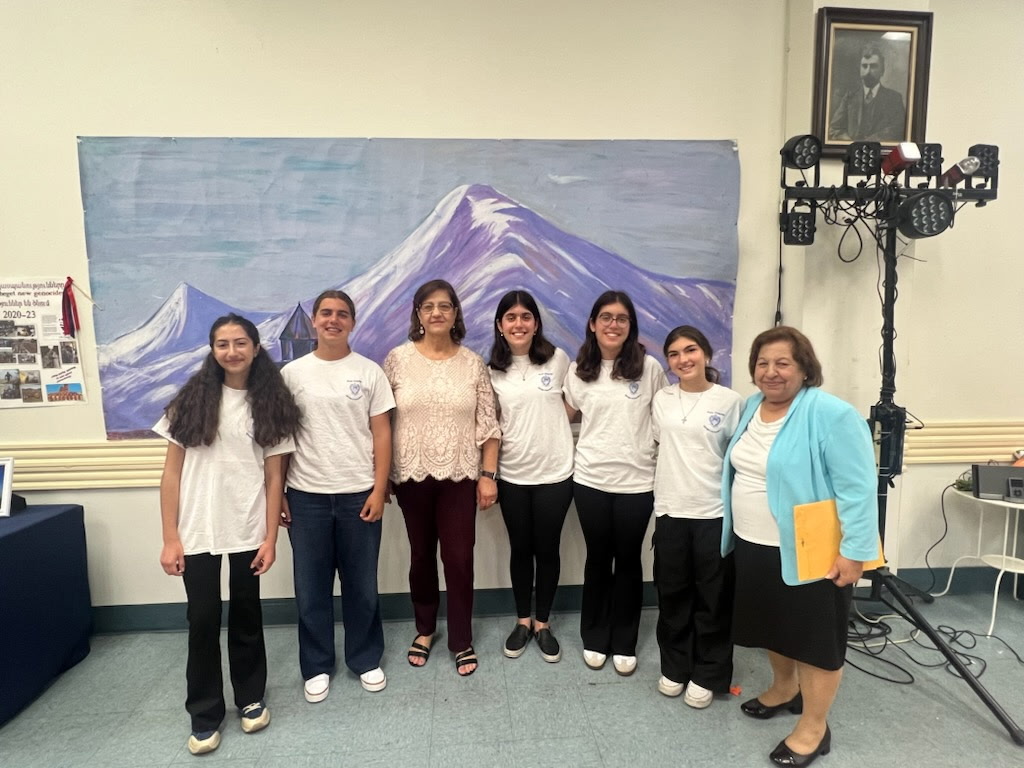At 3:30 p.m. on a Friday, junior Lara Garabedian still has three hours of school left. However, these hours are not spent at RUHS, rather, at the Armenian Relief Society Armenian School, where she has attended for over 10 years.
Lara Garabedian started going to the school because of her mom, who attended when she was a kid. The group of kids at the school know each other well, having grown up together and having so much in common.
“[The Armenian community] is very close and we just relate to each other in a different way [than to school friends]. It’s just a tight community because there are so few of us,” Lara Garabedian said.
One of Lara Garabedian’s sisters, freshman Lily Garabedian, has also gone to the school since she was four years old and understands the impact it has had on their lives.
“I think it’s important to learn the language in case you go to the actual country, you connect better with the people that live there. It’s important to learn where you are from and all the history behind it,” Lily Garabedian said. “It [allows] you to have a better connection with your country, yourself, [especially] if you are not there.”
Throughout the time that the sisters attend school on Fridays from 4 p.m. to 7 p.m., they learn Armenian reading and writing, history, and singing. Beyond the subjects taught at the school, Lara and Lily value their friendships along with academics.
“[Going to the school is] not my favorite thing ever because I would rather do other [things] on Fridays, but I’ve made close friends there,” Lara Garabedian said.
Lily and Lara are in the same class, and learn the same topics for history. When it comes to reading and writing, the older students are given a higher level, and are tested on it as well. They have different books and read through different sections. Lily Garabedian, finds that going to the school allows her to have a stronger relationship with her family because of a deeper connection to their heritage.
“I think [Armenian culture] makes us closer,” Lily Garabedian said. “[My grandma] really loves when my sisters and I understand the language and we speak it. I think that it’s important.”
The memories Lara Garabedian has at the school are full of laughs with her friends. The roots she has created a deep connection throughout the Armenian community, which can apply to people she has never met as well.
“When you find people who are Armenian there’s an instant connection. The Armenian language and community is really rich and deep,” Lara Garabedian said.
In Lara Garabedian’s experience, the Armenian community at RUHS is not widespread. As a minority, she understands the vitality of spreading her culture amongst others.
“A lot or all of our ancestors are Armenian and they’re really strong with [their connection to the culture], but they lived in Armenia,” Lara Garabedian said. “Now here in the U.S., there aren’t many [Armenians] so I think it’s important to learn it [the culture] and spread it.”
Although there are many times shared between the community at the school, like dinners at the end of the year with lots of food, the community also leans on each other for support during tougher times. Through the struggles Lara and Lily learn about, they understand what it was like for their ancestors in the past.
“The community as a whole has gone through so many struggles throughout the years. Having a community to relate to, you have a strong bond because you guys have struggled together,” Lara Garabedian said. “In the Armenian genocide in the 1900’s, Armenia got destroyed. [Many] of our ancestors had to leave their home and spread out throughout Europe and then they came here. But that isn’t really talked about. […] It’s an ongoing problem and not a lot of people know about it, but having the community from Armenian school, it’s nice to talk about it and see ways to improve our community and make it more well known throughout the world.”
For Lara Garabedian, an important part of spreading the word of Armenian culture, its history, language and more is preserving the information for the future.
“[Armenian culture] is not really well known. It’s not really talked about at school, a lot of people probably don’t even know it exists,” Lara Garabedian said. “So being able to tell other people about it, and know it myself to pass it onto my kids or further into the generations, that’s really important.”



